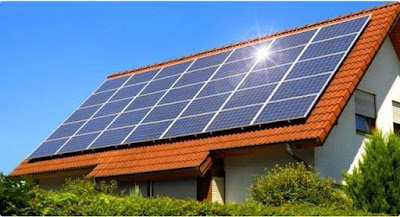The difference between off-grid and grid-connected
Grid-connected: A power generation system that must be connected to the public grid, that is, solar power, home grids, and public grids are linked together and must rely on the existing grid to operate. The grid-connected photovoltaic power station has no electric energy storage device, and is directly converted into the voltage required by the national grid through the inverter.
Off-grid: Also known as an independent photovoltaic power station, a power generation system that operates independently of the grid. The electricity emitted by the solar panel directly flows into the battery and is stored. When it is necessary to supply power to the electrical appliance, the DC current in the battery is converted into 220V AC by the inverter. This is a repetitive cycle of charging and discharging. The system must be equipped with a battery.
Why choose an off-grid power supply system?
The off-grid power supply system is specially designed for use in areas without power grids or places with frequent power outages. It is a rigid demand. It relies on the working modes of "storage and use" and "first-storage and then-use" to provide users with help and services that "deliver charcoal in the snow".
The system operates independently without relying on the power grid and is not subject to geographical restrictions. It can be installed and used as long as it is exposed to sunlight. It is widely used in remote areas without power grids, isolated islands, fishing boats, communication base stations, street lights and outdoor breeding bases. Emergency power generation equipment in power outage areas.
01 Off-grid system energy storage battery
The role of energy storage batteries
In the photovoltaic off-grid system, the energy storage battery occupies the main part, and its main task is to store energy, ensure the stability of the system power, and ensure the load power consumption at night or in rainy days.
Energy storage function: The photovoltaic power generation time and the load power consumption time are not necessarily synchronized. The photovoltaic off-grid system can generate electricity only when there is sunlight. The power generation reaches the highest at noon, but the electricity demand is not high at noon. Many household off-grid power stations are in Electricity only at night. Therefore, the electricity generated during the day needs to be stored by the battery first, and then the electricity is released after the peak of electricity consumption.
Stable system power: Photovoltaic power and load power are not necessarily the same. Photovoltaic power generation is affected by radiation and is in a fluctuating state, and the load side is not very stable. The starting power is greater than the daily operating power of the load end. If the photovoltaic power generation end is directly connected to the load, it is easy to cause the system to be unstable and the voltage to fluctuate. The energy storage battery is a power balance device at this time. When the photovoltaic power is greater than the load power, the controller sends the excess energy to the battery pack for storage. When the photovoltaic power cannot meet the load demand, the controller sends the battery power to the battery. towards the load.
Types and characteristics of energy storage batteries
The energy storage battery is indispensable in the off-grid system. The solar panel charges the energy storage battery through the controller, and the energy storage battery inverts the output for the user through the off-grid inverter. The energy storage battery is compared in the photovoltaic off-grid system. Commonly used are lead-acid gel batteries, ternary lithium batteries and lithium iron phosphate batteries.
Lithium iron phosphate battery is a battery that integrates many advantages. It has high specific energy, small size, fast charging, long service life and good stability.
Its deep cycle charging times are generally 1500-2000 times. A set of lithium iron phosphate batteries can be used in an environment of -40°C~70°C under normal use. Auxiliary heating devices are recommended in extremely cold environments. Lithium iron phosphate battery is an energy storage battery developed in China with mature and independent property rights. The conditions of use and safety protection are well done.
Lead-acid colloidal battery is equivalent to an upgraded version of lead-acid battery. It is maintenance-free and solves the criticism of frequent maintenance of lead-acid batteries. The internal colloidal electrolyte replaces the sulfuric acid electrolyte. improved.
The gel battery can be used in the temperature range of -40℃~65℃, with good low temperature performance, can be used in the northern alpine region; good shock resistance, can be used safely in various harsh conditions; service life is the same as that of ordinary lead-acid batteries double or even more.
High energy density: The energy density of ternary materials is more than 200Wh/kg, which is 3 times that of nickel-metal hydride batteries and 5 times that of lead-acid batteries.
Wide operating temperature range: The battery can be used in the environment of -20℃~60℃, it can reach 80% under 1C discharge at -20℃, and it can reach 70% at -40℃.
Long cycle life: single cell cycle life with high energy density > 1500 times, power type can reach more than 2500 times (capacity retention rate > 80%)




No comments:
Post a Comment